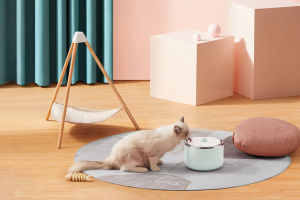When it comes to dining out, we know that the restaurant design plays a huge role in shaping the overall experience.
From the moment we step through the door, our senses are engaged, creating a lasting impression that can affect our enjoyment of the meal.
As more and more restaurants open around the world, the competition in the food industry intensifies, and every detail counts. Whether it's the ambiance, layout, or decor, restaurant design has become an essential element in attracting and retaining customers.
So, how can we create a memorable experience for our guests? Let's dive into three key design elements that can truly make a difference!
1. The Welcome Path: Creating a Memorable First Impression
The entrance of a restaurant is often the first thing customers experience, and it's here that we can make a lasting impression. A well-designed welcome path sets the tone for what's to come, helping to build anticipation and excitement.
For example, the restaurant cleverly uses its entrance as part of its branding, offering guests a unique experience right from the door. As customers walk down the narrow, serene hallway, they pass displays of rare ingredients like flower gelatin, giving them a glimpse into the high-end dining experience that awaits them. This entrance is more than just a path; it's a journey that engages the senses and creates an immediate connection with the brand.
2. Thematic Design: Evoking a Sense of Belonging
One of the most powerful aspects of restaurant design is how well it aligns with the theme of the food served. A strong, clear theme creates a sense of belonging for customers, making them feel at home in the space.
Take "Le Pavillon" in New York, for instance. This restaurant's lush, plant-filled interior creates a striking contrast against the surrounding urban landscape, evoking the feeling of an oasis in the middle of the city. The combination of vibrant greenery and minimalist design mirrors the restaurant's focus on fresh, local ingredients.
The natural ambiance not only enhances the dining experience but also fosters a sense of calm and connection to nature, which helps guests feel relaxed and at ease.
3. Balancing Openness and Privacy in Space Layout
In the post-pandemic world, balancing openness with privacy in restaurant design has become crucial. We all appreciate a comfortable space where we can enjoy our meal without feeling crowded, yet also have the option of privacy when needed.
One standout example is "Ichirin Hanare" in Tokyo, which masterfully blends privacy with a spacious atmosphere through its use of sliding wooden partitions and subtle design elements. Each dining area is slightly tucked away, offering a sense of seclusion without feeling boxed in.
The soft lighting and minimalist aesthetics, rooted in Japanese design traditions, create a calm, serene environment that invites guests to fully relax and enjoy their meal in peace.
Conclusion: Crafting a Cohesive Experience
We've seen that the right restaurant design isn't just about aesthetics; it's about creating an experience that engages the senses, evokes emotions, and connects guests with the brand. Whether it's through a memorable entrance, a strong thematic design, or a balanced layout that offers both privacy and openness, each element plays a vital role in shaping how customers perceive and enjoy their dining experience.
When all these pieces come together, the result is a cohesive, unforgettable atmosphere that leaves a lasting impression and keeps guests coming back for more.
So, Lykkers, if you're in the food industry or just love exploring new dining spots, remember that great restaurant design can elevate the entire experience. What do you think makes the perfect restaurant design? Let us know your thoughts!


